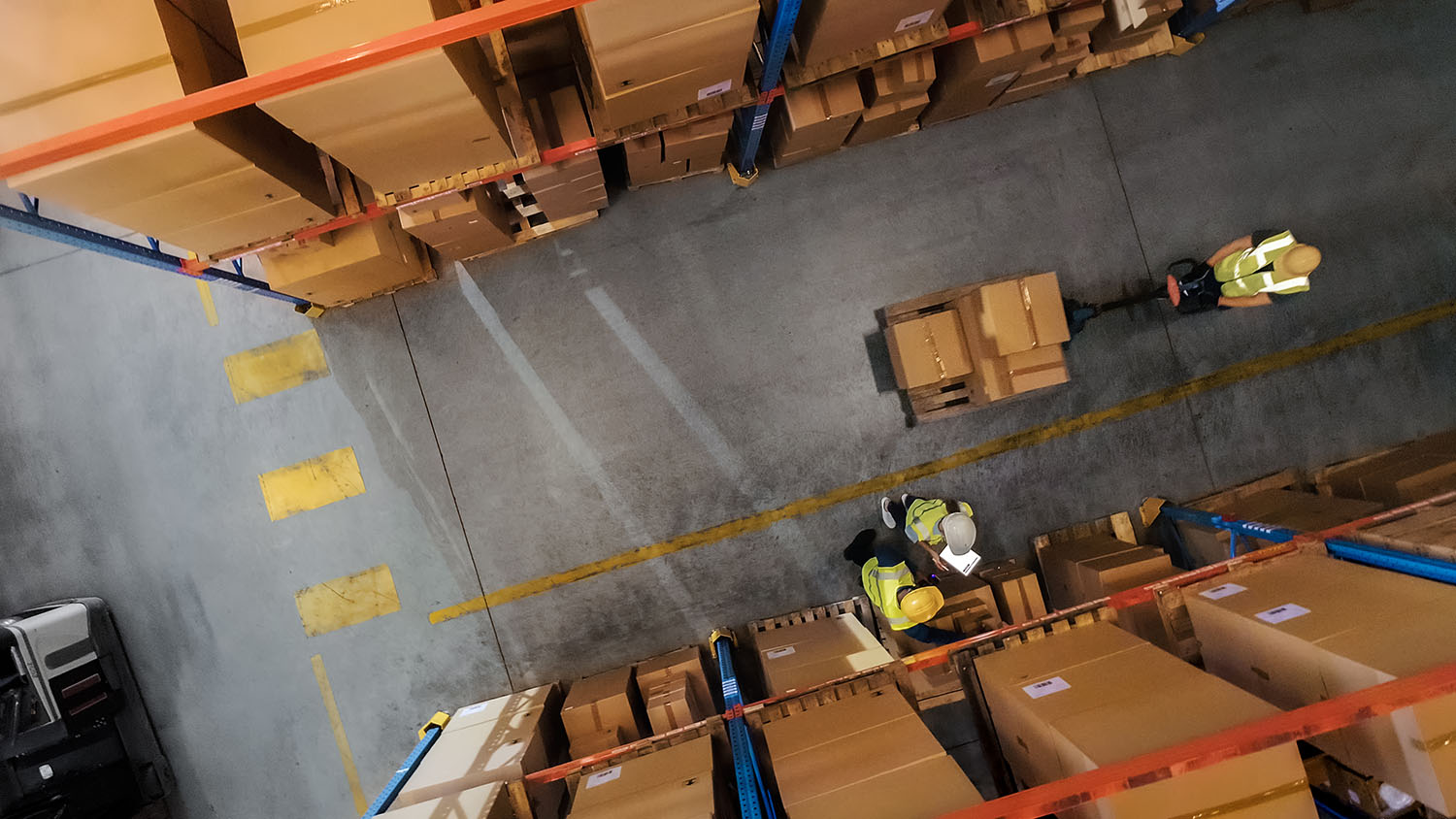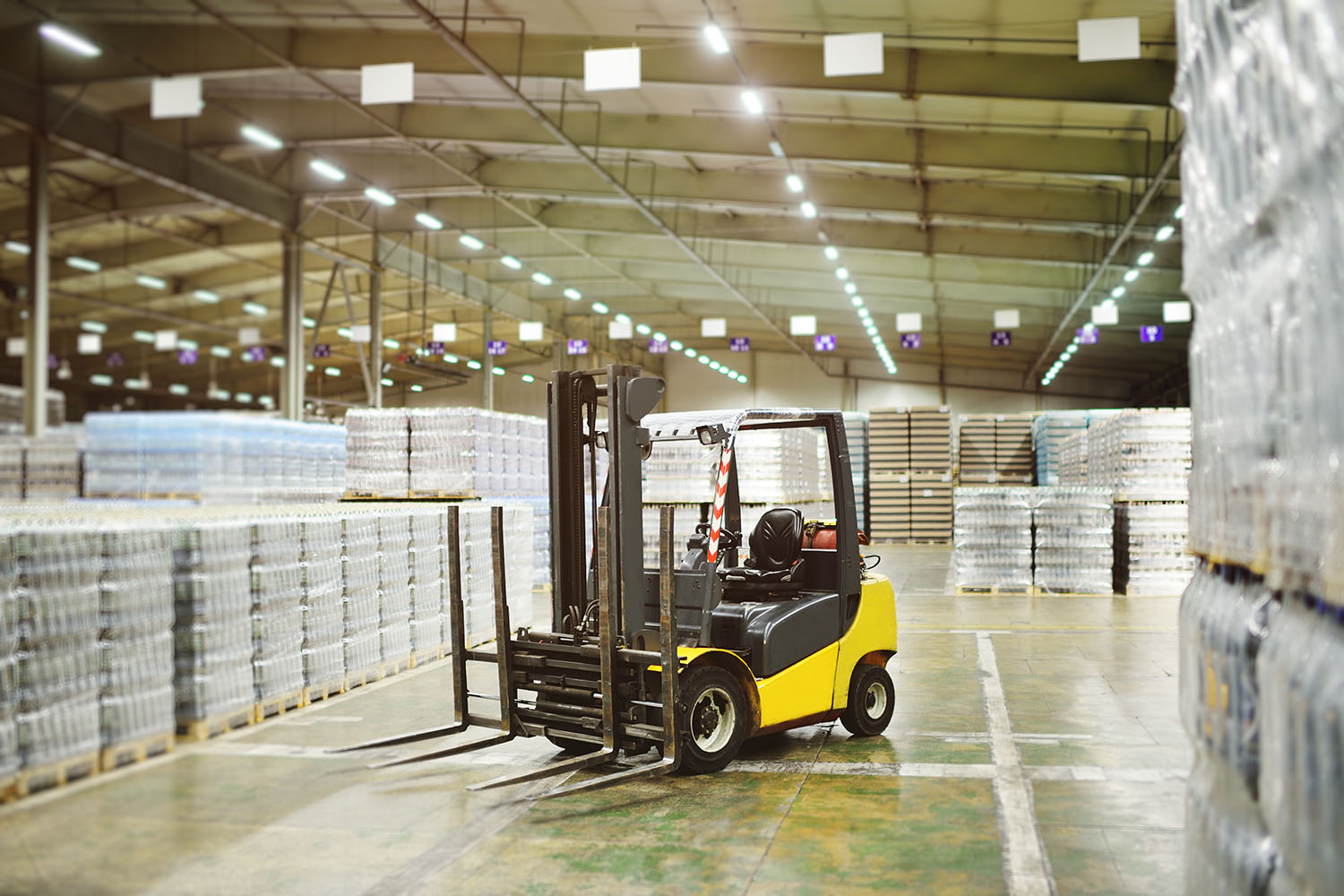E-commerce sales are projected to surpass $8 trillion by 2026. For third-party logistics (3PL) providers, this exponential growth creates opportunities but also brings unprecedented challenges.
Managing thousands of daily orders, meeting customer demands for same-day delivery, and maintaining real-time inventory accuracy are all super important.
And it’s safe to say that the stakes are high, with 84% of shoppers saying they’re unlikely to return after a poor delivery experience. Yikes. Errors like missed shipments or out-of-stock notifications can now result in lost clients and damaged reputations.
This is where a 3PL WMS truly shines. It helps you automate workflows and gives you complete visibility over your operations, so you can deliver top-notch services, no matter the volume or complexity.
In this article, we’ll explore the biggest challenges 3PL providers face in high-volume fulfillment and how an advanced WMS can overcome them. We’ll also highlight the future trends in 3PL WMS Technology that are reshaping e-commerce logistics.
Challenges of High-Volume Fulfillment for 3PLs
Operating as a 3PL in the e-commerce space is like managing a never-ending puzzle. Each piece must fit perfectly, or the entire operation risks falling apart. Here are the most pressing challenges 3PLs encounter in this high-stakes industry:
1. Orchestrating Multi-Channel Fulfillment Chaos
E-commerce businesses don’t rely on a single sales channel anymore. They sell on marketplaces like Amazon, eBay, and Walmart, operate their own Shopify stores, and are also present on social media platforms like Instagram, YouTube and TikTok.
For 3PLs, this means handling order flows from multiple sources simultaneously—each with its own rules for inventory, packaging, and shipping.
And without a system that integrates with these channels, it’s easy for chaos to set in. Orders can get mixed up, inventory mismatches can occur, and shipping delays can snowball.
2. The Real-Time Inventory Accuracy Dilemma
Real-time inventory tracking isn’t a luxury—it’s an expectation. But the challenge lies in maintaining this accuracy across multiple warehouses, for dozens of clients, and hundreds (or even thousands) of SKUs.
Imagine a Black Friday rush where inventory moves faster than updates can register. A single syncing delay can result in overselling, stockouts, and, worse, dissatisfied customers.
For 3PLs, the ability to provide accurate and real-time inventory visibility is imperative to maintain trust and operational flow.
3. Scaling Without Sacrificing Quality
E-commerce is growing fast, and so are the demands placed on the 3PLs that serve them. Onboarding new clients, expanding storage capacities, and processing exponentially larger order volumes should be straightforward—but it rarely is.
Scaling operations often introduce bottlenecks, such as inefficient workflows or errors caused by manual processes. Balancing rapid growth with consistent quality requires systems and tools that can grow alongside the business without compromising speed or accuracy.
4. Staying Ahead of Last-Mile Delivery Expectations
Customer expectations around last-mile delivery are evolving faster than ever. Over 50% of consumers say same-day delivery influences their shopping decisions. For 3PLs, this means optimizing not just fulfillment but also the final handoff to carriers.
Handling last-mile logistics efficiently requires tools like real-time order tracking, route optimization, and partnerships with multiple carriers to offer flexibility. Failing here can lead to broken customer promises and tarnished reputations for both the 3PL and its clients.
5. Ensuring Compliance in a Complex Regulatory Landscape
From handling hazardous materials to navigating international customs regulations, 3PLs often juggle a web of compliance requirements. Any misstep like failing to follow proper labeling laws can result in fines or shipment delays.
6. Managing Peak Seasons Without Disruptions
Whether it’s during Black Friday, Cyber Monday, or holiday shopping seasons—every 3PL faces seasonal spikes. These periods test the limits of warehouse capacity, staffing, and technology.
But the real challenge lies in preparing for unpredictable surges, such as flash sales or viral product trends, while ensuring that standard operations continue running smoothly. Without predictive analytics and flexible systems, peak seasons can turn into operational nightmares.
How the Best 3PL WMSs Enhance High-Volume Fulfillment
A WMS purpose-built to tackle the most complex fulfillment challenges 3PL providers face empowers them to scale. Da Vinci’s Warehouse Management System (WMS) exemplifies what WMS capabilities must have to fully optimize 3PL operations.
1. Real-Time Inventory Tracking
Da Vinci’s WMS ensures inventory accuracy across multiple warehouses and sales channels by updating stock levels in real-time:
- Automated barcode scanning eliminates manual errors
- Cycle counting tools keep stock levels precise without operational disruptions
- SKU-specific tracking provides granular visibility into inventory at any given time
- Serialized inventory tracking supports industries requiring precise traceability, like electronics or medical equipment
- Inventory forecasting tools help predict future demand trends based on historical data
Why this matters: With real-time inventory insights, 3PLs can prevent costly stockouts or overstocking.
2. Optimized Order Picking and Packing
Da Vinci’s smart tools ensure orders are fulfilled with speed and precision. For example:
- Batch picking groups orders with similar SKUs to streamline the picking process
- Wave picking prioritizes high-value or time-sensitive orders for faster processing
- Pick-to-light systems use light indicators to guide pickers
- Packing optimization algorithms that suggest the best packaging materials and box sizes to minimize shipping costs
- Packing accuracy checks that verify items match order specifications before shipping
Why this matters: Optimized picking and packing workflows significantly reduce processing times and minimize order errors.
3. Seamless Multi-Channel Integrations
Da Vinci’s WMS integrates with major sales channels, making it easy to manage multi-channel operations.
- Real-time syncing ensures inventory and order data stay updated across platforms like Amazon, Shopify, and Walmart
- EDI (Electronic Data Interchange) streamlines data exchange between 3PLs and retailers (improving communication and reducing delays)
- Centralized dashboards provide a single view of all orders, inventory, and shipments
- Custom channel rules allow for unique configurations, such as different shipping speeds or promotional requirements for specific platforms
- Returns management tools that handle returns across platforms
Why this matters: By unifying multi-channel operations, 3PLs can eliminate errors caused by fragmented workflows and ensure consistent, high-quality service across all sales platforms.
4. Scalable Client Management
Whether you’re onboarding new clients or scaling with existing ones, Da Vinci simplifies managing diverse client requirements:
- Custom workflows tailored to client-specific needs, such as unique packaging or shipping rules
- Client-level configurations to accommodate special handling instructions or compliance requirements
- Kitting and bundling to streamline the process of assembling kits for clients with subscription box models or promotional bundles
- Detailed reporting and visibility to provide clients with real-time insights into their fulfillment operations
- Offers transparency by allowing clients to track their inventory and order statuses
Why this matters: Scalable client management ensures 3PLs can grow their operations without compromising personalized service for each customer.
5. Comprehensive Billing and Invoicing
Da Vinci’s billing and invoicing engine simplifies the financial side of 3PL operations:
- Custom billing rules for services like storage, fulfillment, and special handling
- Transparent invoicing with detailed breakdowns for client clarity
- Flexible billing cycles to align with client requirements
- Automate discounts or surcharges for clients based on volume or other pre-defined criteria
Why this matters: Automated billing reduces administrative workload and ensures 3PLs capture every revenue opportunity accurately while maintaining client trust.
6. Smart Shipping Tools
Da Vinci’s WMS optimizes shipping processes to meet client and customer expectations.
- Carrier rate shopping finds the best shipping options to balance cost and speed
- Automated label printing eliminates manual errors and saves time
- Real-time tracking updates provide end-to-end visibility for clients and their customers
- Integrates with multiple carriers to ensure flexibility and competitive shipping rates
Why this matters: 3PLs can meet tight delivery deadlines and provide transparency by automating shipping workflows.
7. Advanced Analytics and Reporting
Data is key to optimizing operations, and Da Vinci delivers powerful analytics tools:
- Customizable dashboards track essential KPIs like order accuracy and processing times
- Predictive analytics help forecast demand and inventory needs
- Compliance reporting ensures adherence to regulatory requirements, including for cross-border shipments
- Monitor employee efficiency to identify training opportunities or optimize workflows
Why this matters: Data-driven insights allow 3PLs to make informed decisions, improve efficiency, and plan for future growth with confidence.
Click here to learn about the best practices of e-commerce warehousing.
Future Trends in 3PL WMS Technology
The logistics industry is in the midst of a technological revolution. As e-commerce grows and customer expectations evolve, 3PL providers must innovate to stay in the game. Let’s take a closer look at some of the key trends shaping the future of 3PL:
Smarter Warehousing with AI
Artificial Intelligence is no longer just a buzzword in logistics. Imagine a system that can predict demand surges before they happen, optimize delivery routes on the fly, and even pinpoint where operational errors might occur. AI is making this a reality.
The Rise of IoT in Warehousing
The Internet of Things (IoT) is transforming warehouses into smart, connected ecosystems. Sensors placed throughout the warehouse can track inventory movement in real-time so nothing gets lost in the shuffle. They can even monitor environmental conditions like temperature and humidity.
But IoT doesn’t stop there. Automated replenishment systems use sensor data to trigger restocking when inventory dips below optimal levels, making sure that stockouts become a thing of the past.
Going Green with Sustainability
Sustainability is huge these days too. Customers don’t only want fast deliveries, but also want businesses to minimize their environmental impact.
And leading WMS solutions are now helping 3PLs make logistics more eco-friendly.
Think of packaging algorithms that calculate the smallest possible box size to reduce waste or carbon tracking tools that provide insights into the environmental footprint of every delivery. Combine this with smart routing that cuts down on fuel usage, and you have a logistics operation that’s quick and conscious of its impact on the planet.
Robotics Are Revolutionizing Fulfillment
If you walk into a modern warehouse today, you’re likely to see robots working alongside humans. From robots that transport goods across vast facilities to those that pick items with precision, automation is taking fulfillment to the next level.
Autonomous Mobile Robots (AMRs) reduce the need for manual labor by efficiently moving items between storage zones and packing areas. Whereas, robotic picking systems equipped with advanced vision technology ensure every order is accurate.
Blockchain for Security and Trust
Blockchain technology is finding its way into logistics too. Its ability to create tamper-proof, decentralized records is transforming how supply chains operate, particularly in industries where transparency and accuracy are critical (pharmaceuticals or food logistics).
But it’s not only about security, though. Blockchain also streamlines operations. Take dispute resolution, for example: instead of sifting through emails or conflicting records, parties can refer to the blockchain to verify shipment timelines, product origins, or payment statuses. This makes resolving issues faster and more efficient.
Elevate Your 3PL Operations with the Right WMS
E-commerce is clearly not slowing down. And with customers expecting faster deliveries and businesses scaling at record speed, the pressure is on 3PL providers to keep up with these challenges.
This is where a tool like Da Vinci’s WMS comes in. This 3PL WMS has real-time inventory tracking, seamless integrations, advanced analytics, and the latest automations, it helps you lay the foundation for smart workflows, fulfillment, and unparalleled service to your clients.
Ready to turn these challenges into opportunities and position your 3PL business as a leader in the industry? It’s time to make the switch. Request a demo today and take the first step toward smarter, faster, and more reliable fulfillment.



